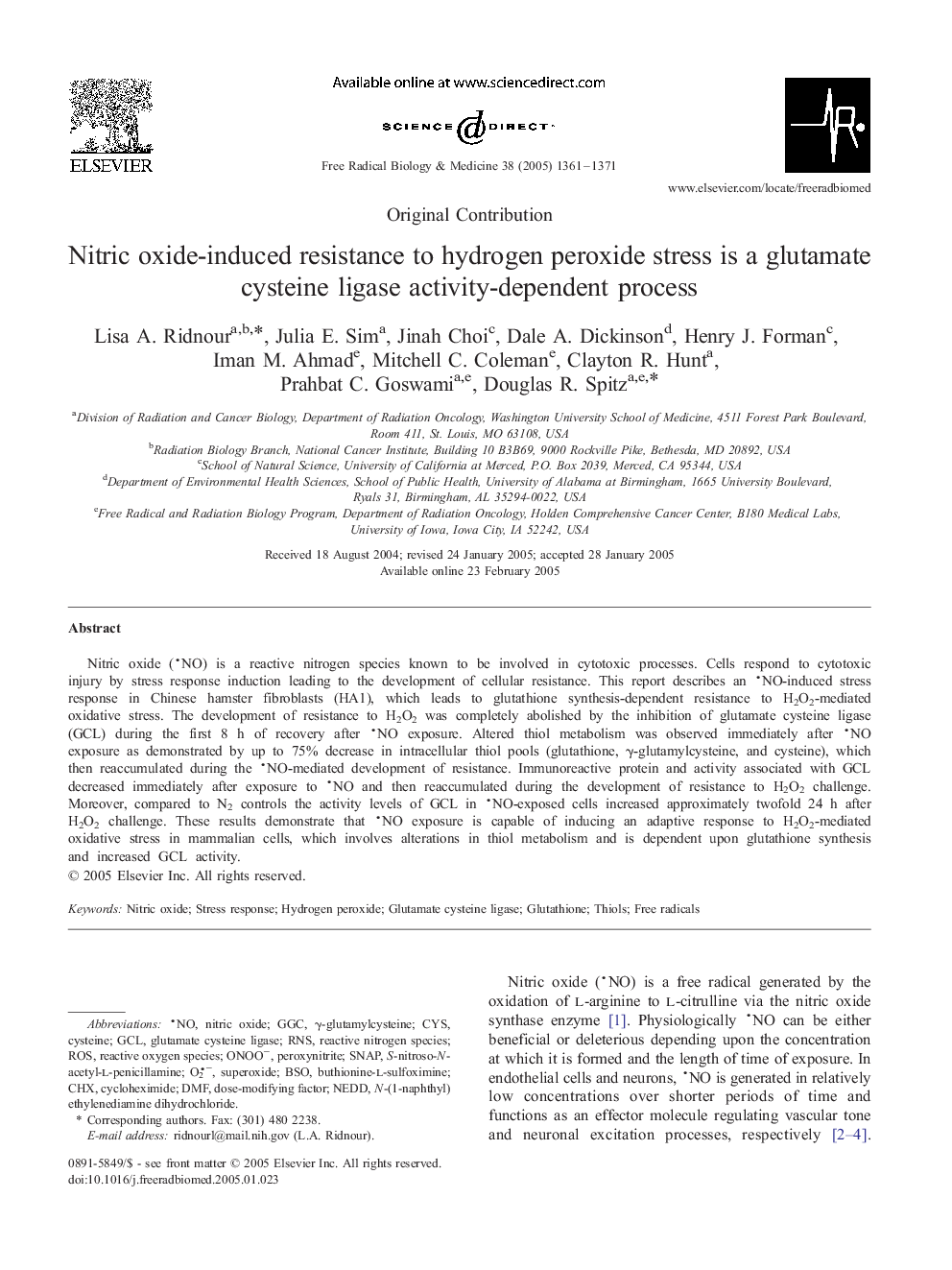| Article ID | Journal | Published Year | Pages | File Type |
|---|---|---|---|---|
| 10739794 | Free Radical Biology and Medicine | 2005 | 11 Pages |
Abstract
Nitric oxide (NO) is a reactive nitrogen species known to be involved in cytotoxic processes. Cells respond to cytotoxic injury by stress response induction leading to the development of cellular resistance. This report describes an NO-induced stress response in Chinese hamster fibroblasts (HA1), which leads to glutathione synthesis-dependent resistance to H2O2-mediated oxidative stress. The development of resistance to H2O2 was completely abolished by the inhibition of glutamate cysteine ligase (GCL) during the first 8 h of recovery after NO exposure. Altered thiol metabolism was observed immediately after NO exposure as demonstrated by up to 75% decrease in intracellular thiol pools (glutathione, γ-glutamylcysteine, and cysteine), which then reaccumulated during the NO-mediated development of resistance. Immunoreactive protein and activity associated with GCL decreased immediately after exposure to NO and then reaccumulated during the development of resistance to H2O2 challenge. Moreover, compared to N2 controls the activity levels of GCL in NO-exposed cells increased approximately twofold 24 h after H2O2 challenge. These results demonstrate that NO exposure is capable of inducing an adaptive response to H2O2-mediated oxidative stress in mammalian cells, which involves alterations in thiol metabolism and is dependent upon glutathione synthesis and increased GCL activity.
Keywords
Related Topics
Life Sciences
Biochemistry, Genetics and Molecular Biology
Ageing
Authors
Lisa A. Ridnour, Julia E. Sim, Jinah Choi, Dale A. Dickinson, Henry J. Forman, Iman M. Ahmad, Mitchell C. Coleman, Clayton R. Hunt, Prahbat C. Goswami, Douglas R. Spitz,
